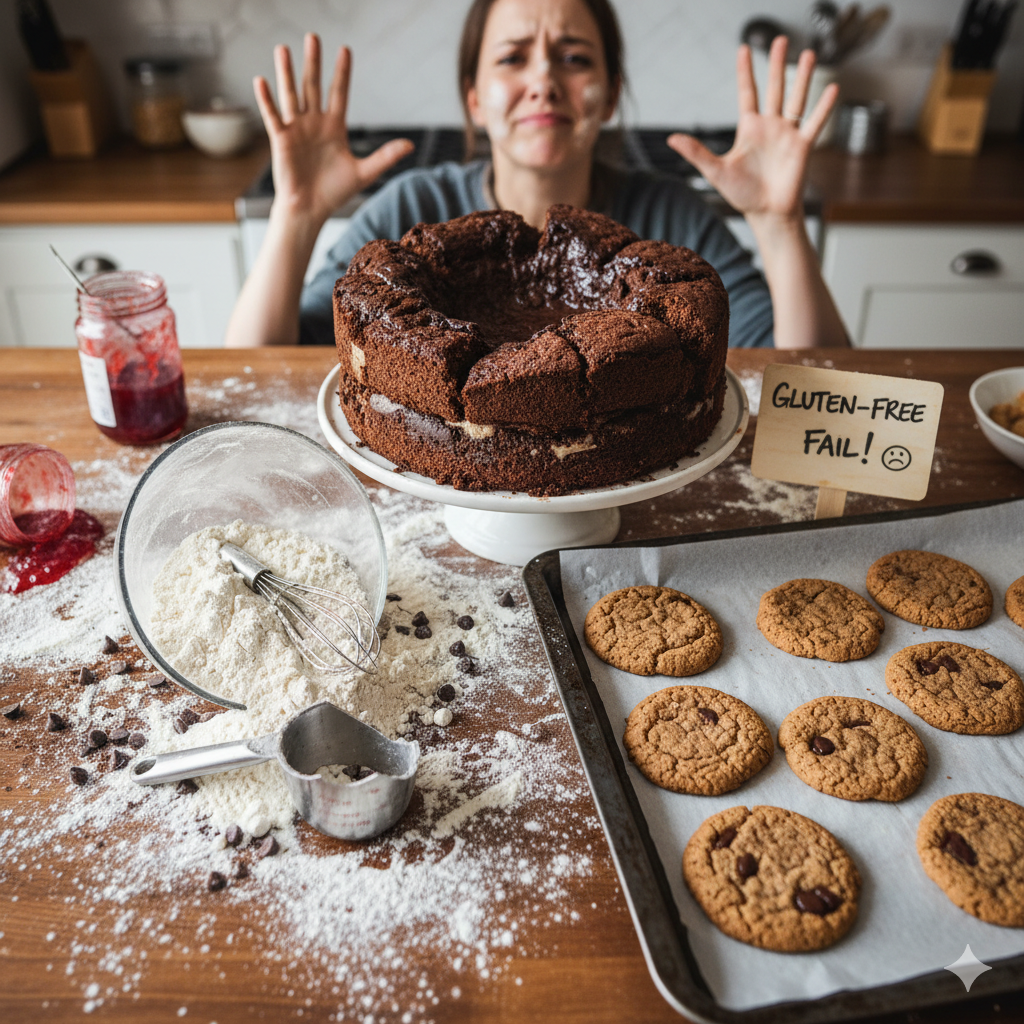🥖 Why Your Gluten-Free Baked Goods Turn Out Dry, Gummy, or Crumbly — and How to Fix It
💡 Introduction: The Struggle Is Real for Gluten-Free Bakers
If you’ve ever pulled a gluten-free cake from the oven only to find it dry, gummy, crumbly, or flat, you’re not alone. Gluten-free baking can feel like science class — part chemistry, part trial and error.
The good news? Once you understand why these problems happen, you can fix them for good. In this post, we’ll explain the top causes of common gluten-free baking issues and the pro tips that make your cookies chewy, your bread fluffy, and your cakes moist.
🧁 1. Why Gluten-Free Baked Goods Turn Out Dry
Keyword focus: dry gluten-free baked goods, dry gluten-free bread
Without gluten, baked goods lose some of the elasticity and moisture retention that wheat flour provides. Here’s why dryness happens:
-
You’re using too much starch (rice flour, cornstarch, tapioca).
-
Your flour blend lacks moisture-rich flours like almond, oat, or sorghum.
-
You’re overbaking — gluten-free goods brown slower but dry out faster.
-
You didn’t add enough fat or liquid.
Fix it:
-
Add 1–2 tablespoons of extra oil or applesauce per cup of flour.
-
Try flour blends with higher protein or fat content.
-
Always check for doneness a few minutes early.
🍞 2. Why Your Gluten-Free Bakes Are Gummy or Dense
Keyword focus: gummy gluten-free bread, dense gluten-free cake
A gummy center is one of the most frustrating gluten-free baking fails. Usually, it’s caused by:
-
Too much liquid in the batter.
-
Overmixing, which activates starches excessively.
-
Undercooked centers from baking at too low a temperature.
-
Too much xanthan gum or psyllium husk.
Fix it:
-
Bake at 375°F instead of 350°F to help structure set faster.
-
Use less xanthan gum (½ teaspoon per cup of flour is plenty).
-
Let baked goods cool completely before cutting — structure sets as they rest.
🍪 3. Why Gluten-Free Goods Are Crumbly or Fall Apart
Crumbly texture comes from a lack of binding power — gluten’s main job in baking.
Causes:
-
No binding agent (xanthan gum, guar gum, flax, or chia).
-
Too much sugar or not enough eggs/fat.
-
Wrong flour ratio — too much rice flour or starch.
Fix it:
-
Add ½ teaspoon xanthan gum per cup of flour (for cookies or cakes).
-
Use two eggs for every cup of flour in muffins or quick breads.
-
Mix in 1–2 tablespoons of nut butter, yogurt, or applesauce for cohesion.
🍰 4. Why Gluten-Free Baked Goods Don’t Rise
No gluten = less structure to trap air bubbles. The most common reasons your gluten-free baked goods stay flat are:
-
Not enough leavening (baking powder, baking soda, or yeast).
-
Cold ingredients slowing yeast activity.
-
Overmixing or letting the batter sit too long before baking.
Fix it:
-
Use fresh leavening agents — baking powder loses strength after 6 months.
-
Warm your ingredients to room temperature before mixing.
-
Let the batter rest for 20–30 minutes before baking to hydrate the flour.
🌾 5. Pro Tips for Perfect Gluten-Free Baking Every Time
-
Weigh your ingredients for consistency — GF flours pack differently by volume.
-
Use a tested gluten-free flour blend instead of single flours.
-
Add moisture-rich ingredients like mashed banana, yogurt, or buttermilk.
-
Store in airtight containers — gluten-free goods stale quickly.
-
Cool completely before slicing — they continue setting as they cool.
🔍 Final Thoughts: Baking Without Gluten Doesn’t Mean Baking Without Joy
Gluten-free baking is a learning curve — but every “gummy” loaf or “crumbly” cookie teaches you something new. Once you fine-tune your ratios and understand how your ingredients behave, your results will be just as delicious (if not better!) than traditional recipes.
